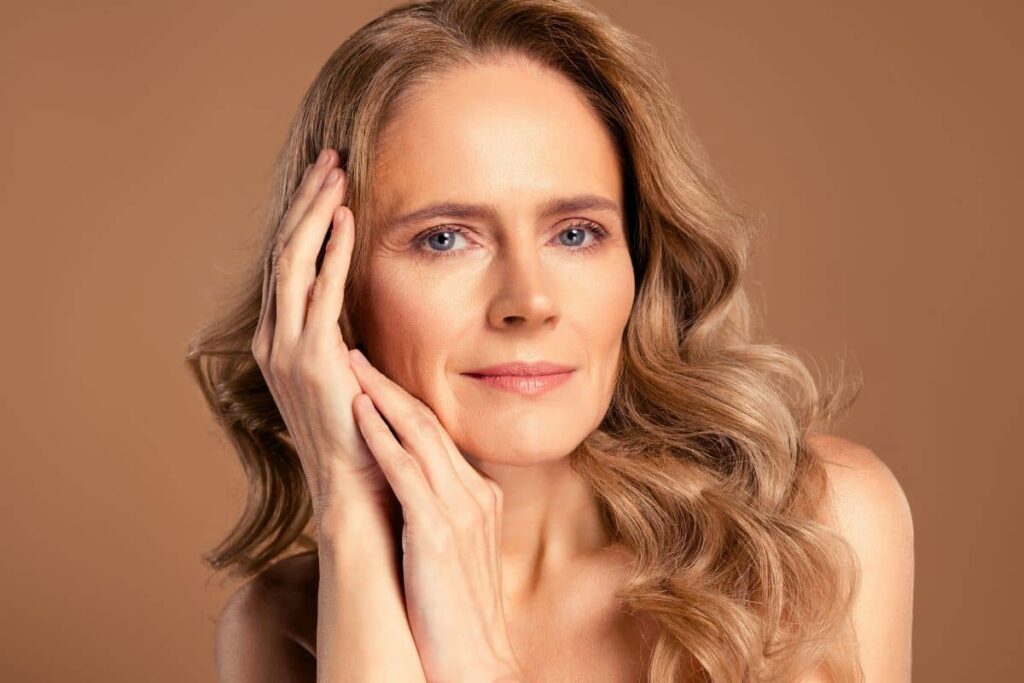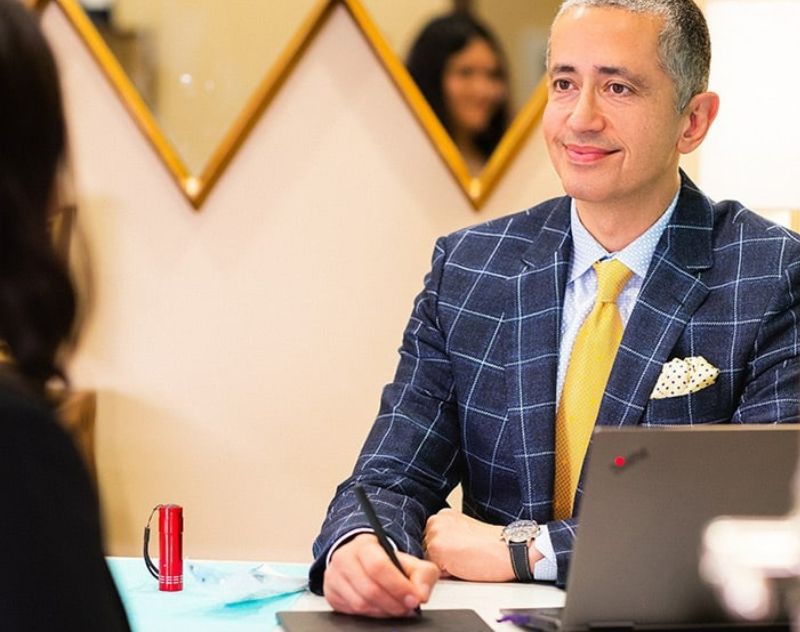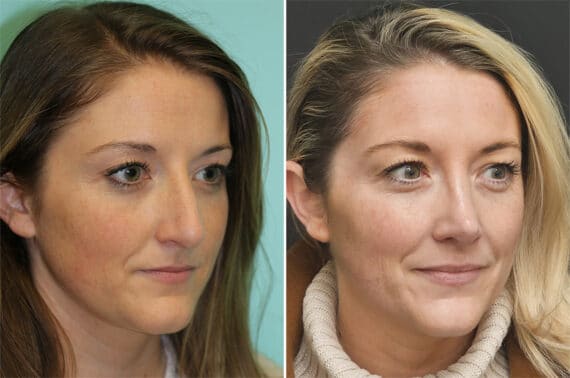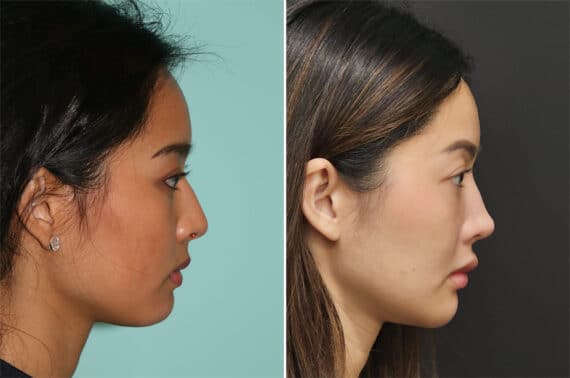When considering rhinoplasty, whether for cosmetic enhancement, functional breathing issues, or both, patients often ask, “Will my nose job stand the test of time? Do I need to get a revision rhinoplasty at some point?”
At The Naderi Center for Plastic Surgery and Dermatology, we understand that rhinoplasty isn’t just about the way your nose looks at three months after surgery. It’s about how your nose will look, feel, and function in five years, ten years, and even thirty years down the road.

Essentials of a Lasting Nose Surgery
- Rhinoplasty permanently alters the nasal structure.
- The nasal shape years later depends on the patient’s genes, skin thickness and the way tissue thins with age.
- The patient must select the surgeon with care for results that last a lifetime.
- Dr. Naderi limits his practice to rhinoplasty which ensures expertise and lasting results.
- Rhinoplasty reshapes the nose so that it blends with the rest of the face, allows normal breathing and keeps its shape as the skin and cartilage change over time.
Short-Term Fix vs. Lifelong Nose Job Results
The truth is that rhinoplasty creates permanent changes, yet the lasting quality of the result depends on your genes and healing, and even more, it depends on the surgeon you choose. The average plastic surgeon often focuses on a short-term look and uses old techniques that compromise the structural integrity of the nose.
The usual rhinoplasty methods either miss the precision needed for an attractive nose or remove large pieces of cartilage and bone; these removals often weaken the framework and produce the clear marks of a botched nose job. The visible outcomes persuade relatives and friends to avoid surgery. A specialist in rhinoplasty plans a nose that stays balanced, stable but also natural for the rest of the patient’s life.
Rhinoplasty Is Permanent—But Your Face Ages
When performed correctly, rhinoplasty is a one-time surgery with lifelong results. Even in the best surgical hands, there is always a 5% chance for a needing a small touch up revision, but as long as patients are realistic and understand there is no such thing as “100% perfect” the results are often a “one and done.” The hump does not come back and the tip does not re-grow.
However, your face doesn’t freeze in time. As you age, gravity, skin thinning, and cartilage weakening can create subtle changes to your appearance. A well-done rhinoplasty considers these factors and creates a nose that ages gracefully—avoiding tip drooping, nostril pinching, or collapse. A proper rhinoplasty avoids the changes that naturally occur to the nose with age, such as significant tip drooping. The nose continues to look balanced even as we age.
“The best rhinoplasty is the one you forget you had because it continues to look natural and elegant over decades—not just in the first few months.”— Dr. Shervin Naderi
What Influences Long-Term Rhinoplasty Results
Rhinoplasty alters bone and cartilage in a lasting way. Later changes in nose shape come from a list of natural causes.
- Genetics – The traits you inherit and the speed at which your body heals tissue mark how the nasal framework stabilizes.
- Skin Type – Thick skin may soften fine details. Thin skin leaves every small change visible.
- Aging – As the years pass, gravity pulls the skin downward and lose thickness; as well as, cartilage softens. These small shifts settle across the face.
The Danger of a ‘Jack of All Trades’ Plastic Surgeon
Many patients don’t realize that most plastic surgeons perform a little bit of everything: tummy tucks, liposuction, facelifts, chin implants, breast augmentation, and maybe a few rhinoplasties each year. In fact, data shows that the average plastic surgeon does about 12 nose jobs a year. That means about 1 nose job each month for the average plastic surgeon. This was according to the American Board of Plastic Surgery. Just for reference, Dr. Naderi has performed six or more rhinoplasties a week over the last 22 years.
When a Nose Job Goes Wrong
Nose jobs rank as the most technically demanding procedures in plastic surgery. No surgeon handles it casually. The nose is a delicate, hollow structure that not only plays a vital role in comfortable breathing but also contributes significantly to the overall balance and harmony of the face. A single error produces lasting trouble, such as:
- Nasal tip pinching and collapse
- Breathing difficulties
- Nasal bridge asymmetry and valve collapse
- Over-aggressive reduction that ages poorly
- Scar tissue buildup, especially in ethnic or thick-skinned noses
Unfortunately, many patients only discover these problems months to years later—when their nose begins to droop, pinch, or distort with time. Revision surgeries are more complex, costly, and stressful than getting it done right the first time. Many patients do not properly research their original plastic surgeon and for example end up trusting their friend who went to someone for a tummy tuck and was happy, assuming they will be good at a “simple nose job” too, not realizing how complex a rhinoplasty truly is.


A rhinoplasty can lasts a lifetime, make sure it’s done right the first time.
Start with a consultation with Dr. Naderi.
Why Dr. Naderi Focuses Exclusively on Rhinoplasty
At The Naderi Center, rhinoplasty is not just one of many procedures—it’s a specialty. Rhinoplasty is our identity. It is what made Dr. Naderi labeled as “The Nose-man” by his own plastic surgery colleagues. Dr. Shervin Naderi is a double board-certified facial plastic surgeon who has devoted his entire career to perfecting the art and science of nose surgery. The only surgery he performs exclusively is rhinoplasty and revision rhinoplasty.

This level of specialization matters. A rhinoplasty specialist understands and takes into account:
- The differences between male and female noses as well as the importance of age, and height.
- How to adjust techniques for thin vs. thick skin as well as ethnic rhinoplasty, including Persian, Jewish, Middle Eastern, Indian, Asian, African, and Latino noses
- The importance of internal support structures to prevent long-term collapse and improve breathing
- How thick skin or previous surgeries affect scar tissue formation
- How to preserve and improve nasal function—not just appearance
Dr. Naderi focuses on lasting outcomes, not just appearance. His patients enjoy natural-looking results as years pass, instead of standing apart from them.
Structural and Preservation Hybrid Rhinoplasty Surgery: Built to Last
The modern approach to rhinoplasty keeps the existing framework and adds support. Surgeons no longer remove most of the cartilage and leave a thin, weak nose that later collapses.
Dr. Naderi uses advanced surgical techniques such as:
- Cartilage grafting to strengthen the tip and prevent future drooping
- Alar rim support to avoid nostril pinching
- Dorsal preservation to maintain smooth, stable bridges
- Precision suturing rather than aggressive cutting to reshape the tip
The techniques keep the nasal structure stable as skin shifts and gravity pulls. The nose keeps its shape and stays balanced with the face over time.
What About Non-Surgical Rhinoplasty?
The patient who wants only a small change to the nose can choose a non-surgical rhinoplasty that uses dermal filler. The filler adds volume but does not alter the nasal bone or cartilage. The result fades after 9 to 12 months and the treatment does nothing to improve long-term structure or function. Non-surgical rhinoplasty is a fantastic option for those patients who need to build up their bridge (such as Asian patients), or for patients who’ve had previous rhinoplasty and need minor irregularities corrected using fillers. It’s also a great option for older patients who need lifting up their tip or reshaping and repositioning of their tip. However, the method does not suit patients who need a significant reduction of the dorsal hump.
The surgeon still sets surgical rhinoplasty as the standard for a lasting change.
Choosing the Right Surgeon is an Investment in Your Future
Patients often pick a rhinoplasty surgeon because the fee is low or the office is close to home, but this is a decision that will affect the rest of their lives.
A poorly done rhinoplasty can lead to lifelong issues, not just with your appearance, but with your breathing, self-confidence, and even mental health. A second surgery costs far more and takes far longer than the initial surgery. The surgeon rebuilds the bridge and the tip with strips of cartilage cut from the rib or the ear.
Choosing Dr. Naderi, a surgeon who performs thousands of rhinoplasty procedures and no other surgery, protects your investment and helps increase the chances you will end up with a beautiful nose that lasts your lifetime and remains elegant and balanced.
See the Results for Yourself
Dr. Naderi’s extensive before-and-after gallery shows a wide variety of rhinoplasty patients and results:
From subtle refinements to complex revision cases, his work is designed for lifelong satisfaction—not short-term fads or trends.
Real Rhinoplasty Patient: 6 Years Later
Just look at how gorgeous our patient looks six years after her rhinoplasty. The transformation a new nose can bring is unparalleled — not only in appearance but in confidence. This young Asian female patient has been under the ongoing care of our team of ultra-specialists. She is now six years post-op and fully healed from her rhinoplasty with Dr. Naderi, and she continues to see Dr. Snodgrass for Botox as well as lip and chin injections. Her results are living proof that when rhinoplasty is done correctly, it doesn’t just look beautiful — it stays beautiful.
Schedule Your Consultation Today
If you plan to have rhinoplasty, do not choose a plastic surgeon who performs nose surgery only from time to time. Trust your face and your future in the care of a nose specialist.
Call The Naderi Center to arrange a consultation and to design a surgical plan that fits you.

